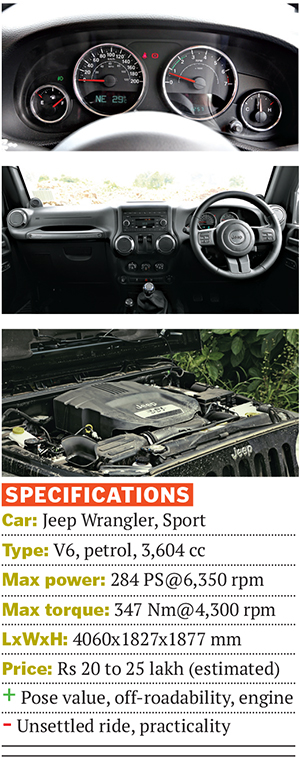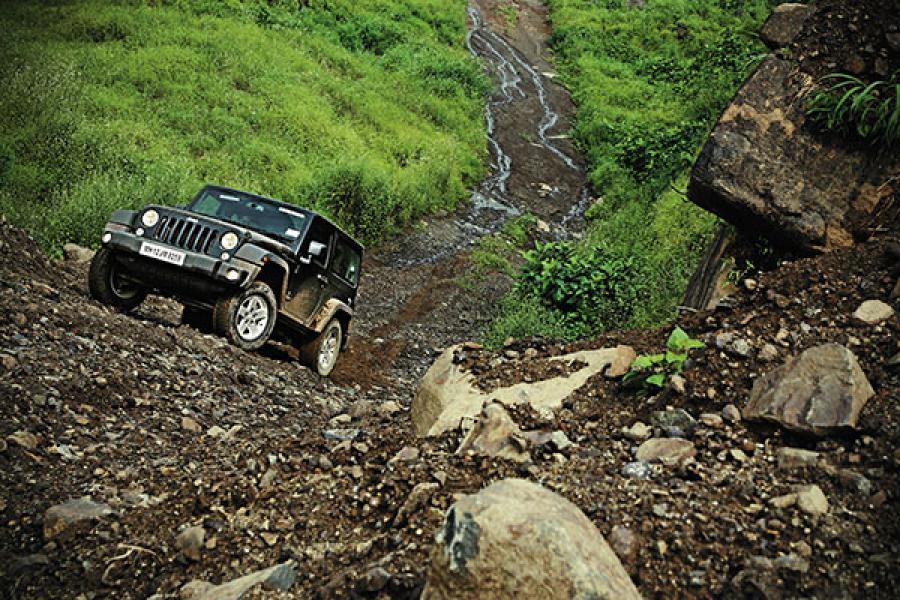
Car Review: Jeep Wrangler
The Jeep Wrangler is for off-roading junkies, not practical drivers
In the 1980s, the Wrangler was made as a replacement for the highly capable but rudimentary CJ series of Jeep. It too was built to take on the rough, but was a more ‘civilised’ beast. Since then, it has had two generations of upgrades, each new generation focused more and more on luxury, but without losing off-roading abilities.
The Wrangler we are driving, the Sport, is the short-wheelbase, two-door version. It can seat only four; and the seats are comfy. It is a struggle to get in because of the high ingress height, and there isn’t a proper place to put your feet, but it isn’t something you can’t adapt to.

You don’t go corner carving in the Wrangler; you just try and keep it as straight as possible. Our Sport version comes standard with mud and snow tyres. So, on dry tarmac, the grip levels are average. The steering returns little in terms of feedback. But, then again, the Wrangler has never been about on-road prowess; it has always been about cool and about invincibility.
Off the road, it has few equals. Rocks, river crossings, slush or steep inclines are dealt with ease when driven in four low. All one has to do is keep it in first, stay on the throttle lightly and steer when necessary. This prowess comes from technology and the development programme every Jeep product goes through.
The Wrangler gets Jeep’s Command-Trac 4WD tech that splits 50:50 torque to the front and rear axle when driven in either 4H or 4L. However, this isn’t an intelligent system like we find on most monocoque all-wheel-drive SUVs, so the torque split never changes between the axles. So, it’s not so great when driving fast on slippery surfaces, but it’s brilliant in truly trying conditions and when the going is slow.
The Wrangler might have great engine flexibility, road presence and an off-roading ability that’s difficult to match. It might also be luxurious, in a way. But it just isn’t a sensible purchase. It’s only purpose built for an off-roading junkie. And for those who love to pose.
(This story appears in the 15 November, 2013 issue of Forbes India. To visit our Archives, click here.)
Post Your Comment















